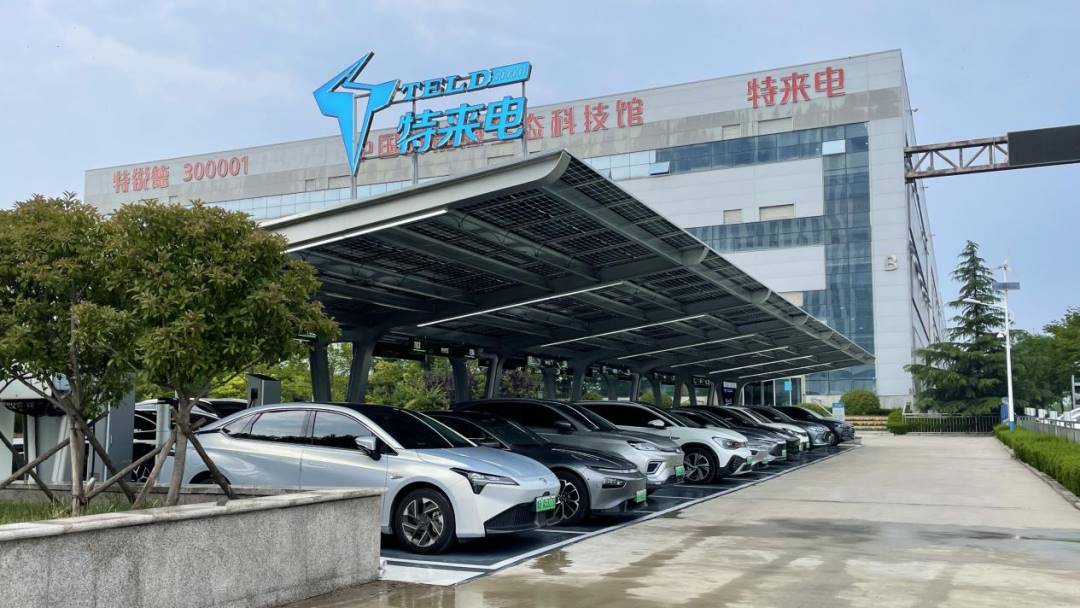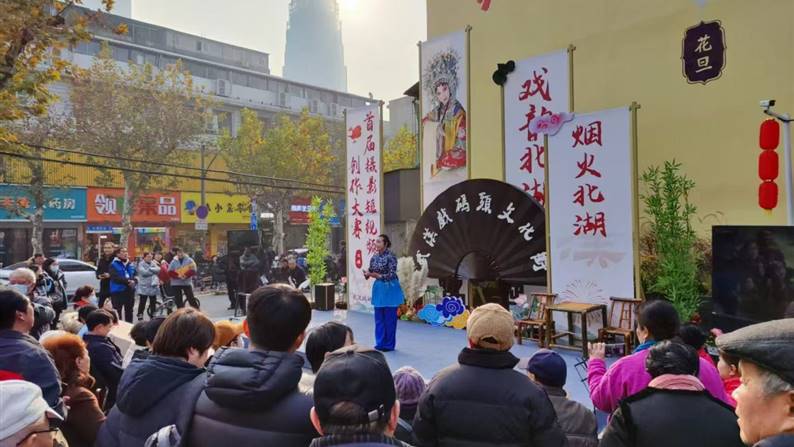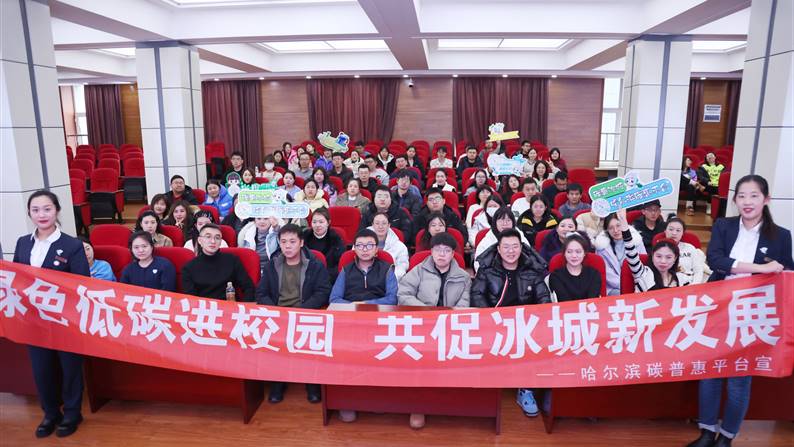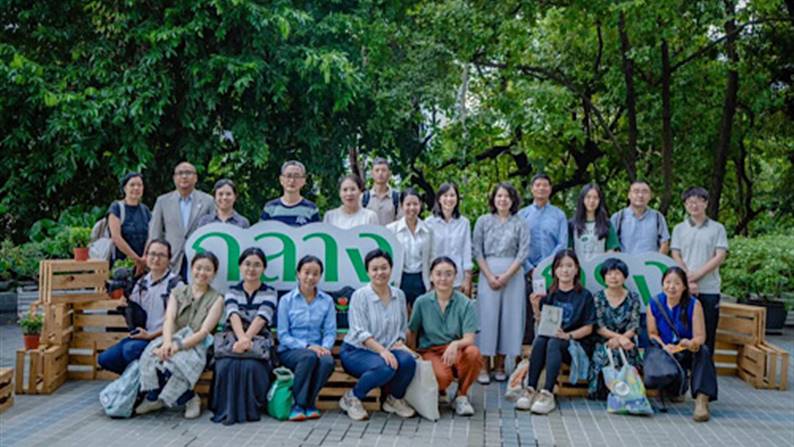


In the understanding of special power, the era of charging network has passed. Based on charging infrastructure, the virtual power plant that integrates "charging network + microgrid + energy storage network" is the new journey in the future.
"Electric vehicles will increasingly play a role as adjustable loads in future grid loads." Treid (SZ: 300001) & telephone Yu Dexiang chairman told network energy (public hxny3060) China, "in new energy, electric vehicle charging and discharging, distributed energy storage system, adjustable load resources as the carrier, such as the coordinated optimization of energy-using 'charging network + + micro grid energy storage network is becoming a new subject of virtual power plant, is the best path to become carbon neutral."
Based on this judgment, Yu Dexiang has high hopes for the future of Teld. As a result, Teld's business model will also undergo profound changes. He believes that charging fees, currently the main source of income for charging pile operators, will be replaced in the future by dispatching fees from converged virtual power plants.
TGOOD was founded in 2004, in 2009 as one of the first companies listed on the GEM. In 2014, TGOOD established Teld and entered the new energy vehicle and charging industry. At present, the number of charging piles, charging volume and charging stations of TGOOD ranks first in the industry.
Yu Dexiang planning, the future will be Teld from the TGOOD spin-off, to the science and technology board listed. From charging network operators to virtual power plant builders, the transformation of special power is another new story under the tide of carbon neutrality.
1
What is a virtual power plant?
Virtual power plants are all the rage these days, but the concept itself isn't new.
The term derives from the 1997 definition of virtual utilities by Dr. Shimon Awerbuch in his book Virtual Utilities: Description, Technology, and Competitiveness of Emerging Industries: Virtual utilities are a flexible collaboration between independent and market-driven entities.
Virtual power plant is not a real power plant, but a power coordination management system. It combines distributed new energy, energy storage system, electric vehicles and other coordinated resources, and then coordinates and optimizes these resources by technical means to achieve peak cutting and valley filling, and ensure the smooth operation of the power grid.
At present, with the increasing proportion of installed renewable energy, the problem that new energy cannot achieve "source with charge" is more prominent. In addition, there is an obvious spatial mismatch between the power side and the generation side. East and South China are mainly distributed new energy sources, while large centralized new energy bases are mostly located in the northwest. In this context, the demand for virtual power plants is increasing.
"The
commercial nature of the virtual power plant is the 'Didi Chuxing' in the
digital transformation of energy." Deep venture lim told ling, an analyst
at China energy network (public hxny3060), "a virtual power plant
construction, or will to power shortage provinces and electricity spot trading
pilot provinces as the starting point, starting from the aggregation of demand
side response and controllable load, gradually expand to the power supply and
power generation side cover, eventually form aggregation 'source network charge
storage integration resources integrated virtual power plant."
It
is also its vast charging network that makes the company want to participate in
the virtual power plant.
The electric cars are connected through a charging network, and each car can be charged or transmitted in reverse, creating a carrier for the virtual power plant. When the electricity load is low and the electricity price is low, the electricity is charged into the electric vehicle. When the electricity load is high and the electricity price is high, the surplus electricity stored in the electric vehicle is sold to achieve peak cutting and valley filling and earn the price difference.
The number of new energy vehicles in China reached 10.99 million by the end of August, up 65 percent year-on-year. When the number of new energy vehicles exceeds 50 million, it is assumed that one vehicle participates in the power allocation of the virtual power plant with 10 degrees of electricity, and the daily power release is 500 million degrees, which is similar to the daily power generation of the Three Gorges Power Station.
At present, the domestic virtual power plant is undergoing the transition from the first stage to the second stage, that is, from invitation type to transaction type. The main feature of this stage is to stimulate the capital pool through demand-side response to obtain profits. The key players in the market are government agencies, and the purpose is to reduce the peak charge.
Huaxia Energy Network (public account hxny3060) learned that the charging network under Teld has been used as a virtual power plant of load aggregation, and started to participate in the inviting user side response in some provinces. Another enterprise that had participated in the invitation user side revealed to Huaxia Energy Network that the income per KWH could reach nearly 3 yuan, far exceeding the income brought by charging operation.
At present, the qualified dispatchable resource capacity of the virtual power plant platform of Special Call has exceeded 1300MW, the dispatchable capacity in different scenarios has exceeded 300MW, and the total dispatchable power quantity has exceeded 30000MWh.
2
"Basic Skills" of Teld
In the view of Lu Wengang, the marketing director of Teld, before the virtual power plant of load aggregation can participate in demand side response, it needs to have three basic capabilities.
Firstly, it is the power forecasting ability of virtual power plant dispatching platform based on charging network. The second is to aggregate enough massive users: electric vehicles, distributed energy and distributed storage; Finally, it is accurate power load control ability.
"The best thing that can happen to the grid is that the power is accurate as a demand-side forecast, so that the overall grid scheduling system can predict future energy use more accurately, which is the threshold for participating in the grid demand-side response." "On the other hand, the power load size is the necessary basis," Lu said. "The power load is so small that even if there is a capacity for demand-side response, it doesn't mean much to the grid. Finally, the load reductions promised to the grid have to be met, and if they are too far off, not only will there be no peak shaving revenue, but there will be penalties."
The core of realizing these three basic skills lies in connecting different user-side resources, including: bus charging network, residential area charging network, public charging network, enterprise and public park charging network and logistics charging network. In these five networks, there are many elements: orderly charging, micro-grid photovoltaic, mobile energy storage, cascade energy storage, green electricity consumption, peak regulation and frequency modulation, vehicle network interaction and carbon trading.
"It's a huge system." Yu Dexiang told China energy network (public account hxny3060) said, "We must connect all the links to form a huge system, its industrial chain can be complete, equipment and facilities, cars, energy and users can really interact. After so many years of accumulation, we have the basic skills to do a good job in virtual power plants."
In terms of the number of charging piles, by August 2022, a total of 16 charging operating enterprises in China had operated more than 10,000 charging piles, and the number of charging piles operated by the top 15 operators accounted for 93.2%. Among them, Teld, Star Charge and Cloud Quick are 303,000, 302,000 and 208,000 units, ranking the forefront of the industry.
From the point of view of the charging market share, the charging volume of Teld in the first half of 2022 exceeded 2.6 billion KWH, a year-on-year growth of 40%, with a market share of about 31%. The continuous growth of the charging quantity index also shows the continuous improvement of the asset quality and operational capability of the special power charging network.
On August 26, Shenzhen Virtual Power Plant Management Center held the inauguration ceremony, in which Teld as one of the first 14 load aggregators to access the Shenzhen virtual power plant. It is reported that Teld in Shenzhen has 10 special substation (34.55MW) and 25 public substation (1.878MW), a total of 35 stations, adjustable capacity of about 36.5MW.
In the overall development plan of TGOOD, the future holding subsidiary Teld will be spun off to the science and technology innovation board listing. Thanks to its accumulation in the field of charging network, XD will continue to deepen the layout of virtual power plants, and accelerate the implementation of projects in many cities across the country, centering on "orderly charging, micro-grid photovoltaic, mobile energy storage, cascade energy storage, aggregated electricity sales, peak regulation and frequency modulation".
With the increasing penetration rate of new energy vehicles in China, Teld is expected to forge a new road for the transformation and upgrading of charging pile network and become a "dark horse" in the industry.

在特来电的理解中,充电网的时代已经过去了,以充电基础设施为基础,融合了“充电网+微电网+储能网”的虚拟电厂,才是未来的新征程。
“在未来的电网负荷中,电动汽车作为可调负荷的作用将会越来越大。”特锐德(SZ:300001)&特来电董事长于德翔告诉华夏能源网(公众号hxny3060)说,“以电动汽车充放电、分布式新能源、储能系统、可调负荷等资源为载体,对用能进行协调优化,‘充电网+微电网+储能网’正成为虚拟电厂的新主体,是实现碳中和的最佳路径。”
基于这样的判断,于德翔对特来电的未来寄以厚望。随之而来的,特来电的商业模式也将进行深刻变革。他认为,目前充电桩运营企业的主要收入来源——充电费用,将在未来被融合的虚拟电厂的调度费用所取代。
特锐德成立于2004年,2009年作为首批公司上市创业板。2014年,特锐德成立特来电并进军新能源汽车与充电行业,目前特来电的充电桩数量、充电量、充电站数量都是行业第一。
于德翔规划,未来将把特来电从特锐德分拆出来,送到科创板上市。从充电网运营商,到虚拟电厂建设者,特来电的转型是在碳中和大潮下又一个新故事。
1
何谓虚拟电厂?
虚拟电厂最近很火,但这一概念本身并不新鲜。
这一术语源于1997年Shimon
Awerbuch博士在其著作《虚拟公共设施:新兴产业的描述、技术及竞争力》一书中对虚拟公共设施的定义:虚拟公共设施是独立且以市场为驱动的实体之间的一种灵活合作。
虚拟电厂并非是实体电厂,而是电力协调管理系统,它通过把分布式新能源、储能系统、电动车等多种可协调资源进行结合,再以技术手段对这些资源进行协调优化,实现削峰填谷,保障电网的平稳运行。
目前,随着可再生能源的装机比例越来越高,新能源无法做到“源随荷动”的问题更加突出;此外,用电侧与发电侧存在着明显的空间错配,华东华南地区主要是分布式新能源,而大型集中式的新能源基地则多在西北。在此背景下,虚拟电厂的需求越来越大。
“虚拟电厂的商业本质,是能源数字化转型中的‘滴滴出行’。”深创投分析师林玮告诉华夏能源网(公众号hxny3060),“全国虚拟电厂建设或将以缺电省及电力现货交易试点省份为起始点,从需求侧响应和可控负荷的聚合出发,逐步向供电省和发电侧扩展覆盖,最终形成聚合‘源网荷储一体化’资源的综合型虚拟电厂。”
特来电想要参与虚拟电厂建设,依托的还是其庞大的充电网络。
通过充电网将电动汽车链接起来,每一辆车既可以充电,也可反向送电,构建起虚拟电厂的载体。在用电负荷低谷、电价较低时,把电充到电动汽车里,在用电负荷高峰、电价较高时,将电动车储存的富余的电卖出来,做到削峰填谷,赚取其中差价。
截至8月底,我国新能源汽车保有量达到1099万辆,与去年同比增长了65%。当新能源汽车保有量突破5000万辆,假设一辆车参与虚拟电厂的电力调配电量为10度,每天放电量为5亿度,跟三峡电站一天的发电量差不多。
目前,国内虚拟电厂正在经历第一阶段向第二阶段的转型,即从邀约型转向交易型。该阶段的主要特征,是通过需求侧响应激励资金池获取收益,市场的关键主体在政府机构,目的则是削减峰荷。
华夏能源网(公众号hxny3060)了解到,特来电旗下的充电网络目前已经作为负荷聚合型的虚拟电厂,在部分省份开始了参与了邀约型的用户侧响应。而另一家曾参加邀约型用户侧相应的企业向华夏能源网透露,每度电的收入可达到近3元,远超充电运营带来的收益。
目前,特来电的虚拟电厂平台具备条件的可调度资源容量已超过1300MW,不同场景下已调度容量超过300MW,总调度电量超过30000MWh。
2
特来电的“基本功”
在特来电市场总监路文刚看来,负荷聚合型的虚拟电厂参与到需求侧响应之前,先要具备三个方面的基本能力。
首先,是基于充电网虚拟电厂调度平台的用电预测能力;其次要聚合足够多的海量用户:电动汽车、分布式能源和分布式储能;最后,则是精准的用电负荷控制能力。
“对于电网来说,最好的情况,就是作为需求侧预测的电力是准确的,这样可以让整个电网调度系统对未来的用能预判更加准确,这也是参与电网需求侧响应的门槛。”路文刚表示,“而用电负荷规模,则是必要的基础,用电负荷太小,即便有能力进行需求侧响应,对电网的意义也不大。最后,向电网承诺降下来的用电负荷必须能够做到,偏差过大的话不仅不会获得相应的削峰收入,还会因此受到处罚。”
而实现这三个基本功的核心,就在于连接不同的用户侧资源,包括:公交充电网、居民小区充电网、公共充电网、企事业园区充电网和物流充电网。而在这五张网中,又包含了多个要素:有序充电、微网光伏、移动储能、梯次储能、绿电消纳、调峰调频、车网互动和碳交易。
“这是一个巨大的系统。”于德翔告诉华夏能源网(公众号hxny3060)说,“必须把所有的环节连接起来,形成一个巨大的系统,它的产业链才能够完整,设备设施、汽车、能源和用户才能真正地交互起来。特来电经过这么些年的积累,具备了做好虚拟电厂的基本功。”
从充电桩数量看,截至2022年8月,我国充电运营企业运营充电桩数量超1万台的共16家,前十五家运营商运营充电桩数量占比93.2%,其中特来电、星星充电、云快充分别为30.3万台、30.2万台、20.8万台,特来电位居行业前列。
从充电市场的占有率来看,特来电2022年上半年充电量超过26亿度,同比增长40%,市场份额约为31%。充电量指标的持续增长,也显示了特来电充电网资产质量和运营能力的不断提升。
8月26日,深圳虚拟电厂管理中心举行揭牌仪式,其中,特来电作为首批14家负荷聚合商之一接入了深圳虚拟电厂。据悉,特来电在深圳有10个专变站(34.55MW)和25个公变站(1.878MW),合计站点总数35个,可调容量约为36.5MW。
在特锐德整体的发展规划中,未来将将控股子公司特来电分拆至科创板上市。得益于在充电网领域的积累,特来电将持续深化虚拟电厂布局,围绕“有序充电、微网光伏、移动储能、梯次储能、聚合售电、调峰调频”,在全国多个城市加快项目落地。

打造绿色低碳街区,奏响幸福美好生活最强音
10-18 · 来源:湖北省武汉市江汉区北湖街道环保社区 · 作者:湖北省武汉市江汉区北湖街道环保社区

“碳惠冰城”:东北首个市级平台的“双碳”实践与冰城示范
10-15 · 来源:哈尔滨产权交易所有限责任公司 · 作者:哈尔滨产权交易所有限责任公司

亚洲气候治理新篇章:中国公益代表团参访曼谷气候周,探索跨区域合作新路径
10-10 · 来源:公益时报 · 作者:公益时报